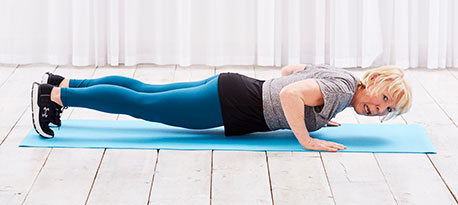If you’re a regular to this column, you’ll be aware of the Deadman drill when it comes to losing fat and that it’s more to do with food than exercise.
There are two key factors here: A) you must be in a calorie deficit (i.e eat less than your body needs so it taps into your fat stores..see my tip below) and B) around 35-40% of your daily calories should come from protein because it fills you up and feeds your muscles.
While meat is very high in protein and has good bioavailability (an indicator how well the protein from a specific food source can be used by the body) not everyone wants to eat meat all the time. I know I don’t. And besides, it’s important for the health of our body to have a varied diet. So what other options are there?. Cottage cheese (still good despite reminding us of 1000 calorie days in the 70’s); high protein yogurt (Total Fage is a good brand but getting very expensive so watch out for supermarket deals. 200g of 0% Total is 108 calories and 18g protein); fish (cod has around 100 calories for 100g and 21g protein. Salmon is more oily and therefore higher at 251 calories for 100g with 22g protein). Cheese is a good source though with some you won’t get much protein for your calorie buck. A 30g portion of mature cheddar ‘costs’ 125 calories and yields only 7.5g protein. Beans and pulses are also good sources (and marvellous for your gut microbiome) but again provide less protein. A 100g portion of chickpeas is around 120 calories with 7g protein. Then there’s eggs. One egg alone provides 6g protein – but it’s actually the egg white that it’s important. Egg white is one of the most bioavailable sources of protein you can eat. There’s even protein in avocados, oats and broccoli so check out the protein content of other non-meat foods you eat and you might be surprised.
To find out how many calories you should have each day to lose fat search for a free calorie calculator online. Simply log in your age, weight and height and how much exercise you plan to do each week and it will tell you. Use a free app like myfitnesspal to log your food or good old pen and paper. If counting is just too much, then for protein think a fist-sized portion.
In terms of quantity of protein, aim for 1-2g protein per kilo of your bodyweight. I’m 60kg and I aim for1.5g per kilo of my bodyweight. THat’s 90g per day. I don’t always reach that (and I don’t give myself a hard time about it) but I try. Yogurt, white fish, whey protein powder and chicken are my main sources – in that order!
Get yourself a journal (I sound like a millennial) and jot down how much protein you manage each day. You can always help raise your intake with protein powder. Whey protein isolate is highly bioavailable and a pea protein is a good choice for vegans.
Annie
x
(Photo by Anna Pelzer on Unsplash)



